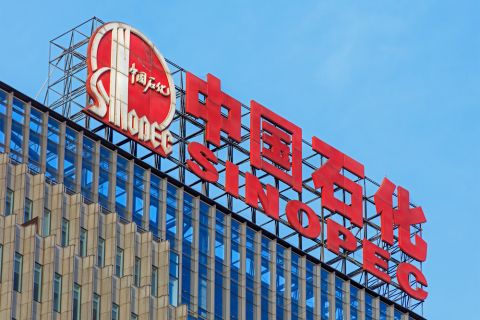New Subsea Lighting Technology Surfaces
Scotland’s PhotoSynergy Ltd. teamed up with WFS Technologies Ltd. to create an on-demand wireless ribbon lighting system that aims to improve diver safety and efficiency subsea, according to a news release.
The technology, called Seatooth Lightpath, combines WFS’ Seatooth subsea wireless communication system that is capable of remotely downloading and storing data from subsea installations and PhotoSynergy’s Lightpath. The latter is described as a “side-emitting flexible fiber that projects a continuous line of light that carries no electrical power.”
The developers said the new technology works at depths of up to 3,000 m (9,843 ft) by divers and ROV operators.
“The light is engaged automatically when the diver or the ROV comes within 5 m [16 ft] of a structure, and provides instant illumination of subsea architecture and delineating features such as control valves, docking bays and even the outline of the structure itself against the natural darkness of the underwater environment,” PhotoSynergy said in the release. “It switches off automatically when the diver or the ROV departs the scene and has the ability to act as a proximity warning system when approaching installations, other divers, ROVs or danger areas.”
So far, only laboratory tests have been conducted. Plans are to test the technology in subsea conditions in early 2017, PhotoSynergy said.
Webtool Releases Subsea Resettable Emergency Disconnect Cutter
Webtool has released a resettable emergency disconnect cutter for light and medium subsea well intervention.
The company said the Webtool guillotine cutter can be reset subsea by ROV, a feature that eliminates the need to return the cutter to the surface vessel for resetting.
“Within a well intervention emergency disconnect package, the bundles are securely positioned in the mouth of the cutter. Multiple fluid transfer lines and hydraulic flying leads, steel tension member, fiber rope, reinforced hoses, electrical conductors, cables and electrical flying leads are all cut in single guillotine action taking just a few seconds,” the company said.
In addition, Webtool said it offers, as an alternative to rechargeable accumulators, a solution that requires no external power source, automatically activating when the emergency disconnect package separates.
Buoy Swivel Technology Aims To Reduce Maintenance Downtime
Flexible Engineered Solutions International (FES) has developed new technology for a major manufacturer of marine equipment based in China, a press release stated.
The CALM Buoy Swivel, which is fully certified by DNV GL, includes new swivel technology that allows the buoy to rotate while maintaining a leak-free joint between the subsea pipelines and vessel during the transfer of fluid.
Because it enables the replacement of seals onboard without the requirement to bring the main buoy into a repair yard, the new swivel will significantly reduce maintenance downtime for the CALM Buoy, avoiding it being offline for long periods of time.
ExxonMobil Develops Technology To Dehydrate Natural Gas
The drive to improve efficiency and lower costs with new technology continues with ExxonMobil Corp. being among the latest to launch solutions.
The oil and gas giant’s cMIST technology removes water vapor from natural gas using an absorption system inside pipes during production. The dehydration technology was described as an alternative to the larger expensive dehydration towers that are typically used. The benefits, according to ExxonMobil, are less corrosion and equipment interference.
Key to the technology is a proprietary droplet generator that breaks up “conventional solvent into tiny droplets that become well dispersed in the gas flow, thereby increasing the surface area for the absorption of water from the gas,” the company explained in a Jan. 5 news release. An inline separator then brings the droplets together and moves the droplets to the outside wall of the pipe.
“The water-rich glycol is regenerated using a conventional system and is sent back to the droplet generator to be used again,” the company said.
Tom Schuessler, president of ExxonMobil Upstream Research Co., said the technology represents “a step change in operational efficiency and a significant reduction in footprint.”
The Sulzer engineering and manufacturing firm landed the exclusive license for commercial application of the technology, which ExxonMobil said has been “extensively field tested.”
—Staff Reports
Recommended Reading
Sinopec Brings West Sichuan Gas Field Onstream
2024-03-14 - The 100 Bcm sour gas onshore field, West Sichuan Gas Field, is expected to produce 2 Bcm per year.
E&P Highlights: April 22, 2024
2024-04-22 - Here’s a roundup of the latest E&P headlines, including a standardization MoU and new contract awards.
E&P Highlights: March 11, 2024
2024-03-11 - Here’s a roundup of the latest E&P headlines, including a new bid round offshore Bangladesh and new contract awards.
The Need for Speed in Oil, Gas Operations
2024-03-22 - NobleAI uses “science-based AI” to improve operator decision making and speed up oil and gas developments.
Strike Energy Updates 3D Seismic Acquisition in Perth Basin
2024-04-19 - Strike Energy completed its 3D seismic acquisition of Ocean Hill on schedule and under budget, the company said.





